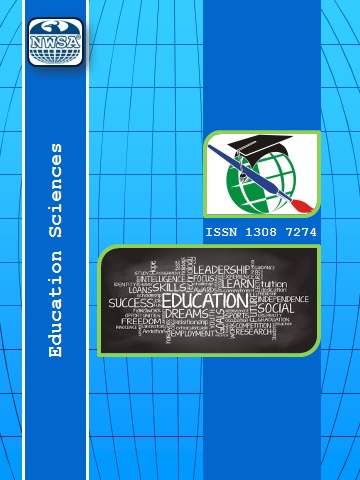References
[1] Hargrove, T.Y. and Nesbit, C., (2003). Science notebooks: Tools for increasing achievement across the curriculum. ERIC Clearinghouse.
[2] MOrrison, J., (2008). Elementary preservice teachers use of science notebooks. Journal of Elementary Science Education, 20(2):13-21.
[3] Shepardson, D.P. and Britsch, S.J., (2001). The role of children's journals in elementary school science activities. Journal of Research in Science Teaching, 38(1):43-69.
[4] Ruiz-Primo, M.A., Li, M., Tsai, S.P., and Schneider, J., (2010). Testing one premise of scientific inquiry in science classrooms: examining students' scientific explanations and student learning. Journal of Research in Science Teaching: The Official Journal of the National Association for Research in Science Teaching, 47(5):583-608.
[5] Carin, A.A. and Bass, J.E., (2001). Methods for teaching science as inquiry (8.bs.). New Jersey: Merrill Prentice-Hall Inc.
[6] Shepardson, D.P. and Britsch, S.J., (1997). Childrensscience journals: Tools for teaching, learning, andassessing [Electronic version]. Science and Children, 12-47.
[7] Baxter, G.P., Bass, K.M., and Glaser, R., (2000). An analysis of notebook writing in elementary science classrooms (Tech. Rep. No: 533). Los Angeles, America: University of California, Center fortheStudyn of Evaluation.
[8] Fulton, L., (2017). Methods and strategies: science notebooks as learning tools. Science and Children, 54(6):80-85.
[9] Gül, E., (2012). Fen defteri uygulamasının öğrencilerin Fen Bilimleri dersindeki başarıları ve derse karşı tutumlarına yansımaları. Yayınlanmamış Yüksek Lisans Tezi, Hacettepe Üniversitesi, Sosyal Bilimler Enstitüsü, Ankara.
[10] Yeşilçelebi Bıyık, B., and Şenel, E.A., (2019). Science notebook practice for science lesson: a research on fourth grades. Çukurova Üniversitesi Eğitim Fakültesi Dergisi, 48(2):1367-1399. https://doi.org/10.14812/cuefd.442805.
[11] Carter, I.S. and Akerson, V.L., (2024). Elementary teacher candidates experiences with and ıdeas about digital science notebooks. Research in Science Education, 54(4):671-685.
[12] Dickinson, G. ve Summers, E., (2011). Öğretmen yetiştirme aracı olarak bilim defterleri. Uluslararası Toplumda Bilim Dergisi, 2:203-222.
[13] Uysal, H., Cengiz, Ş.T., Özgül, S.G., Gençer, A.A., ve Akman, B., (2016). Okul öncesi öğretmenlerinin bilim defterlerine ilişkin görüşlerinin incelenmesi. Necatibey Eğitim Fakültesi Elektronik Fen ve Matematik Eğitimi Dergisi, 10(1).
[14] Yıldırım, A. ve Şimşek, H., (2016). Sosyal bilimlerde nitel araştırma yöntemleri. Ankara: Seçkin Yayıncılık.
[15] Akturan, U. ve Esen, A., (2008). Fenomenoloji. T. Baş & U. Akturan (Ed.), Nitel araştırmayöntemleri içinde (ss:83-98). Ankara: Seçkin Yayıncılık.
[16] Patton, M.Q., (2002). Qualitative research evulation methods. California: SAGE Publishing.
[17] Gravetter, J.F. and Forzano, L.B., (2012). Research methods for the behavioral sciences (4. Baskı). USA: Linda Schreiber-Ganster.
[18] Saban, A., (2009). Öğretmen adaylarının öğrenci kavramına ilişkin sahip oldukları zihinsel imgeler. Türk eğitim bilimleri dergisi, 7(2):281-326.
[19] Miles, M.B. and Huberman, A.M., (1994). Qualitative data analysis: An expanded Sourcebook. (2nded). Thousand Oaks, CA: Sage.
[20] Tanış Özçelik, A., (2021). Sınıf öğretmeni adaylarının araştırma sorgulamaya dayalı fen öğretiminde bilim defteri kullanımı hakkındaki görüşleri. Abant İzzet Baysal Üniversitesi Eğitim Fakültesi Dergisi, 21(2):540-558. https://doi.org/10.17240/aibuefd.2021.21.62826-591814.
[21] Çalışkan, İ., (2014). Fen öğretmen eğitiminde fen defterleri kullanımına ilişkin uluslararası karşılaştırmalı bir durum çalışması. Eğitim ve Bilim, 39(175):108-120.
[22] Pearson, P.D., Moje, E., and Greenleaf, C., (2010). Literacy and science: Each in the service of the other. Science, 328(5977):459463.
[23] https://doi.org/10.1126/science.1182595
[24] Rivard, L.P., (1994). A review of writing to learn in science: Implications for practice and research. Journal ofResearch in Science Teaching, 31(9):969-983.
 +90(535) 849 84 68
+90(535) 849 84 68 nwsa.akademi@hotmail.com
nwsa.akademi@hotmail.com Fırat Akademi Samsun-Türkiye
Fırat Akademi Samsun-Türkiye
